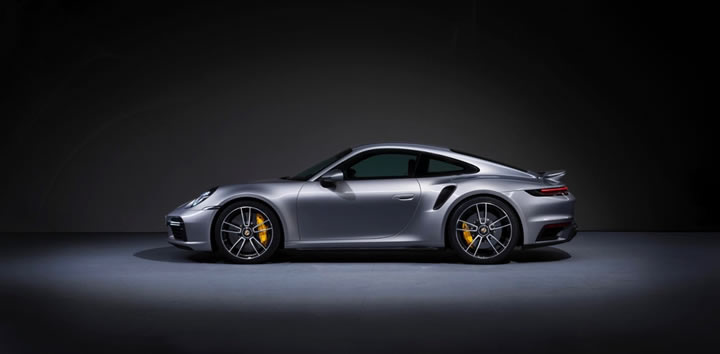From 1964 until nowadays Porsche is one of the most beloved and admired cars. Not only do they show brilliant results in the F1 races, but they also continue to create beautiful in any way, sportcars.
It all began with the first 911 model. A smidge, back in the day’s even miniature, but super fast sports car. It had an air-cooled, rear-mounted, 2.0 L (1.991 cc) 130 PS (96 kW; 130 hp) flat-6 “boxer” engine, similar to a 1.6 L 4-cylinder unit of the 356. It was paired with a “Type 901” five-speed manual transmission.2+2 seating with styling that was largely by Ferdinand “Butzi” Porsche, son of Ferdinand “Ferry” Porsche. 911s have been produced in just one place since 1964 — Porsche’s Stuttgart factory, Germany.
The firm built 16 versions of the Porsche 911, along with the 911 GT3 which sports a 435-horsepower engine. Each 911 has about 5,000 welds. You can now buy six 911 types: 911 Carrera S, S4, S Cabriolet, 4S Cabriolet, and the two Turbo models (more on them a little later). Read more at Twiftnews about history of Porsche.
The Porsche 991 generation, launched in 2011, was one of the 911 history’s greatest renovations. Back in 1974, Porsche reinvented the performance of road cars with the first 911 Turbo, fitting its iconic model with a turbocharged engine and an exaggerated rear wing to create the legend existing today. The organization has since endeavored to refine the underlying formula, even though the occasional shift in strategy has been taking place along the way. Developed on a modern design, that is only the third in 911’s 50-year history. The first 911 Turbo was revealed with a relatively large 3.0-liter engine, ‘whale tail’ spoiler and wide bodywork trademark.The last model of the Turbo S which was presented in April 2020. A veritable masterpiece of mechanics. It is a symbios of all the good traditional 911s. The 911 Turbo S packs 640 horsepower and 590 pound-feet torque over the 991.2 Turbo S and 197 hp, up 60 hp and 37 lb-ft torque, and 200 lb-ft over the current Carrera 4S. The extra oomph results in a zero-to-60 blistering time of just 2.6 seconds (two-tenths faster than the last Turbo S) and a 205-mile-per-hour peak speed. Not only credit the 3.8-liter flat-six 911 but also its particular all-wheel-drive system.
Porsche’s still made some major aerodynamic changes when it launched the 992, but the 911 Turbo S goes further, naturally. The rear extensible wing is larger and modifies both its height and angle of attack in four different configurations of driving mode. The rear wing serves as an air brake, too, over heavy braking.

Nevertheless Porsche has thought about everything. The car also has a “wet mode” which senses water spray and makes automatic improvements to the drive systems, although it recommends the driver turn to the full-tilt Wet mode once the car reaches a certain threshold.
Prices start for a Coupe at $203,500 or the Cabriolet at $216,300. Add $1,350 for destination fee to that number. And for those who enjoy Porsche’s job, but can’t afford it yet, it’s a powerful incentive for the future.
